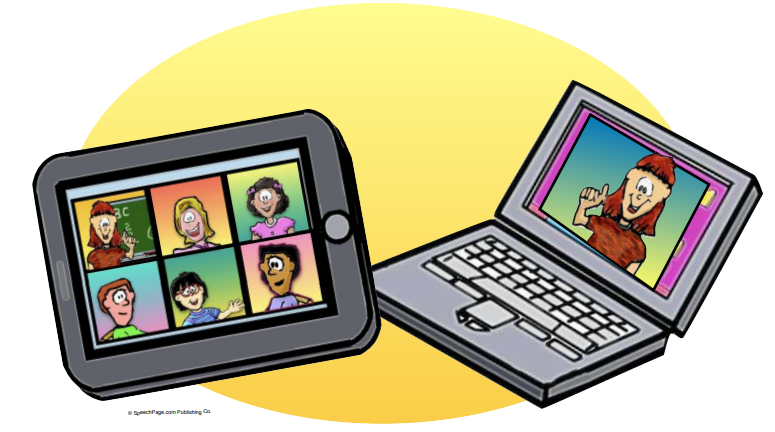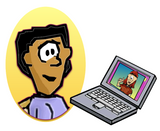Using Social Stories To Help Students Who Are Struggling With Participating In The New Online School-At-Home Experiences
Posted by Don D’Amore MA CCC-SLP on Aug 31st 2020

As a large number of schools across our nation transition to a ‘school-at-home’ experience during the COVD-19 pandemic, many of our students, especially those on the autism spectrum or with other special needs, may struggle with the transition. Sometimes it is difficult to explain some of the complicated new ways of experiencing school from home to our students.
A student may struggle with the idea that they will be doing school work at home now, and that they won’t be at school with their friends. A student may also have difficulty with the idea of interacting with their teachers using a screen on a tablet or a computer. These are all things that have never happened before, so it is understandable that it could be a struggle at first, especially for students who have difficulty with other changes to routines.
A social story provides a supportive illustrated story line that can be read to the student to gradually help them understand a new situation or area of struggle. Social stories are often used for children with developmental delays or autism. They can also be useful for helping to simply explain a complex concept to any child.
Social stories are an informal type of support tool originally developed by Carol Gray that uses words and visuals to help explain specific concepts, experiences, social situations, skills or other necessary tasks in a first-person narrative story line that is supportive and reassuring. Carol Gray, the creator of Social Stories states that: “Social Stories describe a situation, skill or concept in terms of relevant social cues, perspectives and common responses in a patient and reassuring manner that is easily understood by its audience” (NOTE: These materials are not affiliated in any way with Carol Gray.)
While Social Stories are not ‘cures’ for any and all situations or behaviors, they can be helpful for many students! Improvements from social stories will not typically occur after one reading. It is recommended to repeat reading the story to the child over time, and talking about the ideas presented in a positive manner. Improvements will hopefully occur in a gradual way over time as the child better understands the issue and solutions for the area of struggle.
Two free PDF downloads are offered here to help with common situations that may occur for some students in this new school-at-home experience:
I Can Have School At Home Sometimes! (Click Here to Download)
This social story is designed to help a student who is struggling with having ‘school-at-home’ now. The student may miss interacting with friends at school, and struggle with some of the aspects of school-at-home. This story talks about how it will be OK to be at home while doing school. The student may even still see their friends online. It concludes with the idea that someday they will be going back to their classroom.
I Can Use A Screen For School When I Am At Home! (Click Here to Download)
This social story is designed to help a student who is struggling with the aspect of coming to and using a video screen such as a tablet or computer to participate in ‘school-at-home’. The student may have never experienced using a screen in a live-online interactive experience while in their home. They may have never seen their school staff on a video screen talking to them before. The story emphasizes that it is OK, and that they will be helped by family as they get used to the new idea. This story talks about how while it may feel strange for the student at first to interact with a teach using a screen, it will be OK. The student’s family can help them with this new way of experiencing school at home.
It is suggested that the stories be read to your child. They can be repeated regularly over several days to help the student to better understand the issue and the solutions. Try to be positive and encouraging! The social story can be a great way to begin talking about the subject with your child.
Additional visual supports such as a First/Then or other visual picture schedule materials can also be helpful strategies for this topic. Include school staff and families together in a team approach. Each child’s ability and goals should be considered to determine specific needs.
Best Wishes!
Don D’Amore MA CCC-SLP is an experienced certified Speech Language Pathologist who personally illustrates and customizes visual strategy materials, and who has worked with students with special needs who benefit from these types of visual support strategies for more than 25 years. He is also co-owner of SpeechPage.com Publishing Co. and a TpT store which produce a variety of learning materials. Please share them with anyone who could benefit.
These materials MUST BE FREE to download and print for personal use. Please do not ever use them or any part of them for sale or profit. It is the responsibility of the support team/users to determine the suitability or appropriateness of products/downloads for their particular application/needs, and the consumer assumes all liability and risk associated with their use. No guarantees, expressed or implied, as to the reliability or effectiveness of products or the content are offered.







